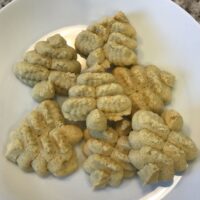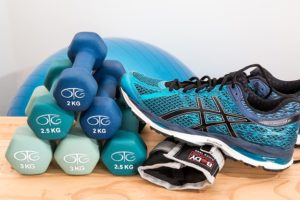December. Holidays. Parties. Gifts. Puppies.
The commercials and ads portray this as a wonderful, gleeful, joyous time of year. And it is, for a much different set of reasons than the marketing people make it out to be.
At the same time, some real-life stuff brings sadness, stress, loneliness, anxiety. And a bundle of not so happy emotions.
Holiday blues can lead down a path of emotional eating.
Hang with me here. This gets better. I’m really not trying to be a December Debbie Downer. My hope is to bring a bit of comfort to those of you who may be dealing with this month’s real-life tough stuff and the eating binge that sometimes happens.
Like it did to my friend. Three of her friends have passed away in the last month. She’s grieving.
We’ve been working together as she gets healthier, loses weight, and feels really good in her body.
She’s doing the work and accomplishing her goals. Cheers and applause!
The bottom fell out this week when she lost her third friend and discovered the little gingerbread men cookies at the store.
The gingerbread men called to her, managed to somehow jump into her buggy, and make it into her home. 
In a moment of total grief and hopelessness, she opened the bag. She began by eating only 6 of them. (“They’re very small,” she told me.)
She then ate 6 more. According to her, they were AMAZING! (I’m so proud of her for following my rule of only eating what’s amazing.)
She had been craving the warm comforting spices of nutmeg, cinnamon, sugar, and ginger, along with the richness of molasses. She honored her craving with a food that brought her comfort, perhaps linked to a happy childhood memory.
Then, she texted me to let me know what had happened, when she finally woke up from her sugar-induced nap.
There are times when this happens to everyone—even the cleanest eating personal trainers and coaches on the planet.
Some of their favorite things: donuts, Oreos, wine, bread. Oh, and ice cream.
I told my friend to let it go, and hide the remaining “bad boys” in the back of the pantry. And eat some vegetables with your next meal.
Today, she has no desire for those little guys. She’s done.
Not only that, she noticed how she feels when she is on sugar overload vs. when she eats nutrient dense foods, like turkey and salad.
Sometimes we have to go off the rails to realize that we actually feel so much better when we don’t.
The gingerbread men accomplished what nothing else could have in those moments. We laughed about how they had seduced her into eating them, one right after another, after another…. The laughter helped relieve her grief. Interesting how we find healing.  (There’s a picture of one of them, lurking in the shadows.)
(There’s a picture of one of them, lurking in the shadows.)
I’ll be touching on topics like this as well as other holiday food challenges during our Zoom cookie bake this Saturday.
Gingerbread men, anyone?
The Amazing Cookie Bake with Health Coach Carol
I’m baking cookies this Saturday December 4, and I’d love for you to join me! Through the magic of ZOOM, we are all gathering to bake and socialize and have a darn good time.
Now, I know lots of you are sick of zooming. However, this is a very interactive experience and when we’re done, you’ll have a batch of cookies baked and you won’t have to keep wondering when in the world you’re going to find time to do THAT!
AND, if you don’t have cookies for Santa, he may not show. Do you want to risk it?
The Particulars
WHAT: The Amazing Cookie Bake with Health Coach Carol
WHERE: ZOOM, so you’re in your own kitchen, and yet we’re together
WHEN: Saturday, December 4, 2021 from 10:00am to 11:30am CST
HOW: You gather the ingredients you need to make whatever cookie you desire, and we all make cookies
WHY: Creating cookies from scratch is an act of love, and the world could use more love
COST: FREE
This will be similar to those cookie exchanges, except we make our very favorite—or try something new—and enjoy a special treat together. And you know my rule, only eat it if it’s AMAZING!
As a result, what may on first glance appear counterintuitive to our health, is not.
While the cookies are baking, I’ll be coaching you on various aspects of health. We learn from one another and share lots of laughs.
To join in the fun, be sure to email me prior to Saturday, December 4 to save your spot. I’ll then email you the event Zoom link, along with any special instructions.
Sending love,
Health Coach Carol
“Today, me will live in the moment, unless it is unpleasant. In which case me will eat a cookie.”–Cookie Monster











 (There’s a picture of one of them, lurking in the shadows.)
(There’s a picture of one of them, lurking in the shadows.)